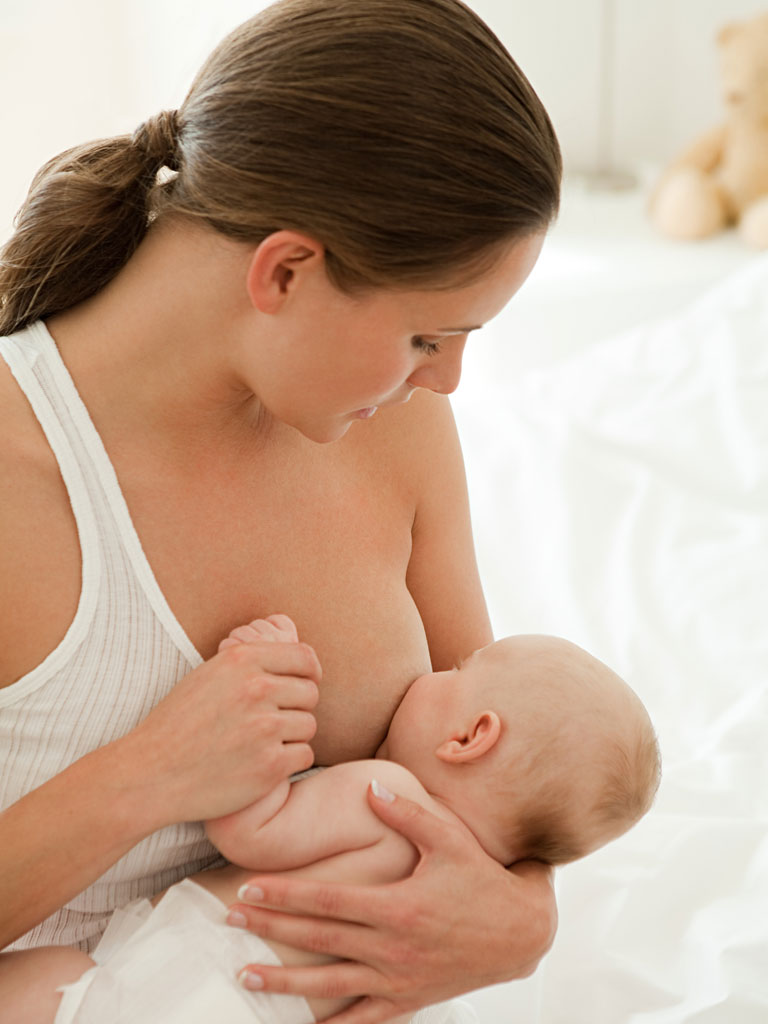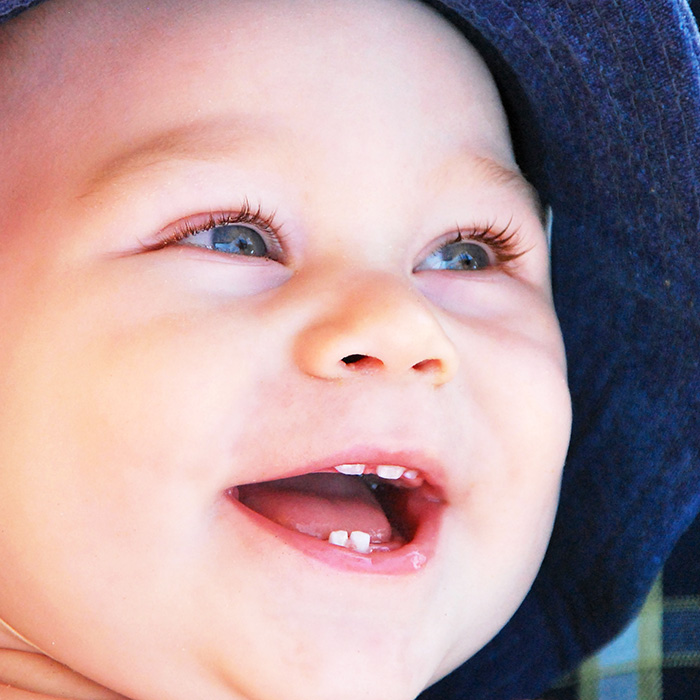Can you over feed a breastfed baby
Are you curious? Can you overfeed a breastfed baby?
If you would like a PDF download of this blog delivered directly to your inbox, pop your details below.
My first baby fed frequently. I mean every 40 minutes or so and as he got older, every time he cried, I offered him the boob. It worked, he settled and he wasn’t a fan of a dummy. My boob was the dummy!
He was a big bouncing baby boy and I couldn’t help wonder whether I was overfeeding him.
If you’re anything like me, you may worry that you are feeding your baby too much because they feed often, or are gaining weight fast, or are possetting milk (spitting up) frequently or are coming off the breast regularly (12).
In this blog, I hope to talk you through the complex mechanisms involved in breastfeeding and reassure you that you’re unlikely to be overfeeding your breastfed baby.
How babies breastfeed – the mechanics
So first, the technical part.
When your baby latches on, the nipple is stretched and your baby’s tongue creates a ‘rigid plate’ which moves with the jaw. This allows the action of suction which allows milk to flow into your baby’s mouth (1).
Your baby will control how long they feed for, showing signs of drowsiness and content when they are finished. If you note your baby’s ‘full’ signals, you won’t overfeed your breastfed baby.
How often does my baby need to breastfeed?
As a newborn, your baby will not require a lot of milk to feel full with each feed. To begin with, they may want to feed every 1 to 3 hours. The amount of milk taken at each feed will gradually increase as your baby grows and the time between feeds may begin to get longer (2).
Is it normal for your baby to want to breastfeed all the time?
First of all, every baby is different, so while some may want to feed more regularly, others may not.
The term used to describe when your baby wants to feed all the time is ‘cluster feeding’. This is a normal behaviour which could indicate ‘growth spurts or teething’ and may be linked to a ‘developmental leap’ which will eventually pass (3).
Cluster feeding is unlikely to cause overfeeding a breastfed baby.
Should I put my baby on a feeding schedule?
It is recommended that to begin with, babies feed on demand, meaning that they dictate feeding times. However, as they grow, your baby will naturally begin to fall into a feeding pattern (5). By 7 months or so, a routine for food and milk feeds becomes more important so that weaning progresses and nutritional needs are met.
Babies have a built in ability to let you know when they are hungry. They’ll usually let you know by using cues such as being more active or sucking their fingers. Some babies cry when they get too hungry but there are many other hunger cues.
Each baby is different and over time you will learn the hunger signs exhibited by your own baby (4).
Formula vs. breast milk
While breastfeeding is considered the optimal first food for your baby, formula is manufactured to be as nutritionally close to breast milk as possible.
The composition of breast milk changes as the needs of your baby change. It also contains a huge volume of antibodies which assist in strengthening your baby’s immune system as well as probiotics for healthy digestion and further immunity.
Formula is also packed with nutrients, but does not deliver the same level of immunity against illness as breast milk does (6), even with the addition of probiotics.
Bottle fed babies are more likely to be overfed as we make up bottles with the intention of your baby finishing it. Often well meaning parents will encourage their baby to take a bit more or finish the bottle when their baby has stopped suckling.
I recommend mimicking breastfeeding when feeding from a bottle (expressed breast milk or formula) by ‘pace feeding’. This involves giving baby control over how much they feed rather than you being in charge.
If you follow the signs that your baby is finished (drowsy and content) whilst bottle feeding using the paced feeding method, you should find that overfeeding doesn’t happen.
So can you overfeed a breastfed baby?
Overfeeding your breastfed or formula fed baby is very rare (7). In fact, I’d go as far as to say it’s not possible to overfeed a breastfed baby via the breast but if you need to bottle feed either expressed breast milk or formula, there is a possibility of overfeeding.
Possetting or spitting up after a feed (8), is a natural reflux and is not a sign of overfeeding. If you are unsure, it’s always best to check with a health professional.
Check your expectations for your baby
Check your expectations when bottle feeding. Babies don’t need a set number of ounces at each feed. That’s a myth and they certainly don’t need a target to get them sleeping through the night. Often these myths are what make parents feed past the point of fullness (9).
Tips to soothe your baby without overfeeding
If your baby is crying or fussy but you know that they are not hungry, you can avoid offering the breast if you wish.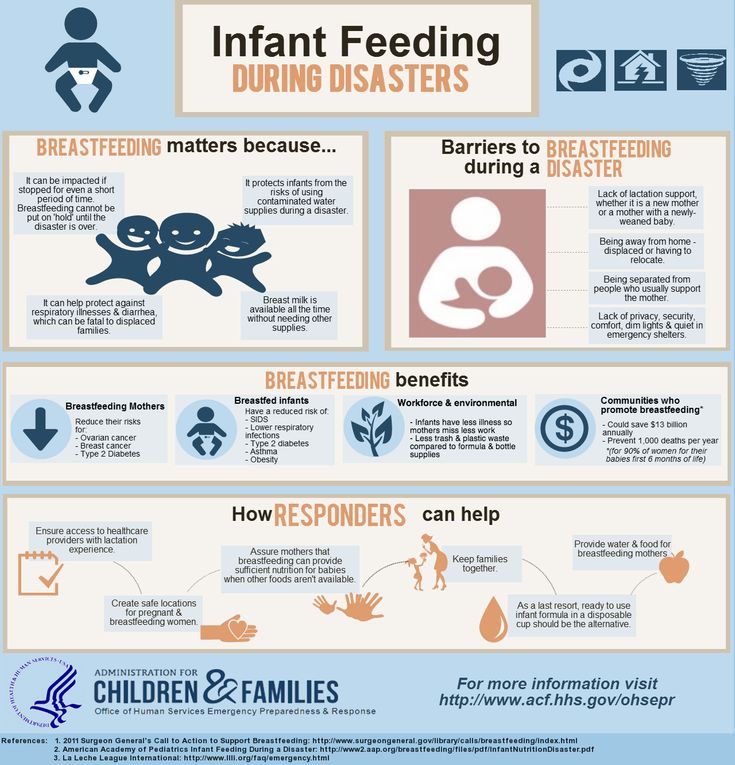 Use the following options to soothe them instead (10):
Use the following options to soothe them instead (10):
-
Be gentle and patient – use soft noises, sing songs and use a gentle rocking motion or sway to help calm them.
-
Move to a quiet room – loud environments may be overstimulating and a source of distress for your baby.
-
Try introducing a dummy (pacifier) as babies self soothe through sucking. A dummy can make a great alternative to the soothing suckling at the breast.
Signs that your baby may be full
Your baby may be full if they show any of the following signs:
-
Push away from your breast or bottle (if breast milk is expressed)
-
Move their head away from your breast or bottle
-
Fuss at your breast or bottle when you offer it
-
Show a lack of interest when being fed
-
Start falling asleep
-
Stop sucking
-
Extend and relax their arms, fingers and legs (9).
What are the consequences if you overfeed your baby?
So, what happens if you do overfeed your baby?
In the short term, your baby may show signs of discomfort from a build up of wind and will cry frequently and intensely. They may also posset (spit up) more than usual (11).
They may also posset (spit up) more than usual (11).
In the long run, your baby’s relationship with food may be affected (10). They won’t recognise or understand feelings of hunger and fullness so won’t master appetite regulation.
Unfortunately in my practice, I see children who are fussy eaters, who graze rather than eat meals and often it’s because they haven’t had the opportunity to truly understand their appetite and hunger/fullness cues.
What is the takeaway message?
Although overfeeding your breastfed baby is rare, it can still happen if you feed expressed milk via a bottle. Overfeeding is more common in formula fed and combination fed babies for this reason.
Always pay attention to ‘finished’ cues and signals that your baby is giving you during feeding.
If you do think you have overfed your baby, don’t panic, just recognise what happened and know what to do next time.
With thanks to Meghan Mundkur, Lottie Harman and Catriona Lawson for their help writing this blog.
Sarah Almond Bushell MPhil, BSc (Hons) RD MBDA – Registered Dietitian & Children’s Nutritionist
Can You Overfeed a Breastfed Baby? — Genuine Lactation
This is a very common question - especially when mothers are looking at their roly poly babies and all mankind comments on their delicious chunkiness.
First, your chunk-a-licious baby is just fine.
Second, you cannot overfeed a breastfed baby at the breast.
Milk is made on demand. If the baby doesn’t take all of the milk in the breast, it signals to the breast not to make as much. If your baby is a milk hoover, then your breasts will make the milk needed to satiate your little vacuum.
If my baby isn’t chunky, are they under-fed?
No. So long as your baby is maintaining their growth curve and gaining weight, that is all you need to watch. Some babies nurse like champions and are lean little string beans.
What if my baby is gaining more weight than average?
This can happen, and when it does we certainly want to have baby checked by a skilled lactation consultant. This is often a case of baby eating to soothe pain unrelated to hunger, or a baby with poor oral skills who is not regulating intake at the breast. A comprehensive evaluation allows us to identify the cause and work to help baby regain the ability to self-regulate at the breast.
This is often a case of baby eating to soothe pain unrelated to hunger, or a baby with poor oral skills who is not regulating intake at the breast. A comprehensive evaluation allows us to identify the cause and work to help baby regain the ability to self-regulate at the breast.
What if I have an oversupply?
Your baby will stop eating when your baby is full.
If your baby has milk just gushing out the sides of your breasts, changing the feeding position can help to slow down the flow of milk into your baby’s mouth.
Side-lying, Laid-back, and Koala are all positions to help manage this, as well as unlatching during the initial letdown while letting your milk flow into a collection cup or burp rag if you’re not interested in keeping it.
Baby stomachs are very small - they can’t just say Eff-It and go for that 2nd slice of carrot cake like an adult.
If you still have a significant amount of milk, hand expressing or pumping the remaining amount will help you to create freezer milk for use later.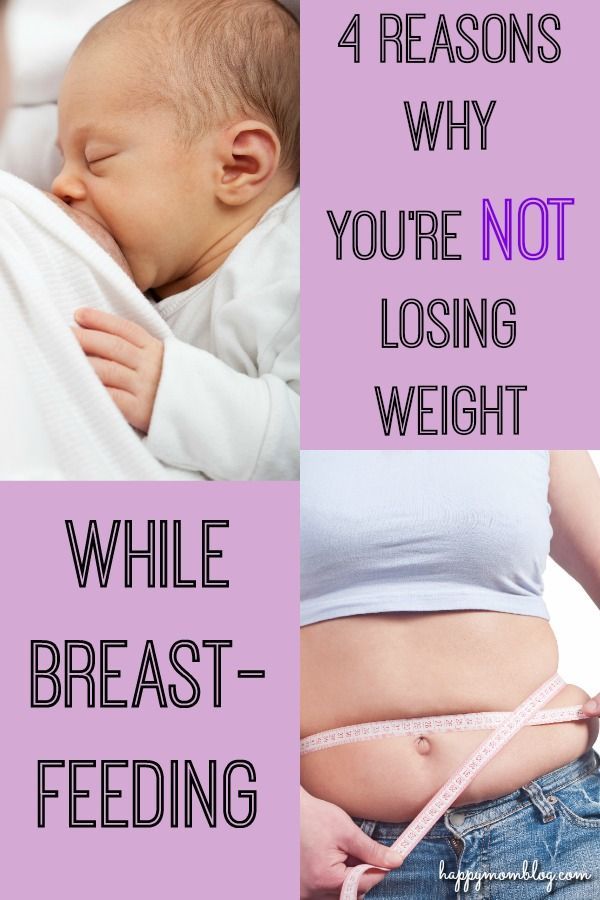
But every time my breastfed baby eats, she is so stuffed she’ll projectile vomit all the milk back up???
That is likely an infant reflux issue related to aerophagia.
With aerophagia, the more air that is swallowed, the more forceful the eventual ejection.
What are some contributing factors to infant aerophagia?
Possible lip or tongue-ties are often the root of this issue. If the baby’s seal isn’t tight around the breast while latching, not only is extra air coming in, but there is inadequate milk transfer. Any human that swallows excessive air while eating is going to have some level of gastrointestinal distress.
A complete oral assessment by a lactation professional who specializes in tongue/lip ties should be your first step for receiving care.
What are the feeding cues when baby is hungry?
Babies will eat 8-12 times in 24 hours. Watch for wet diapers to ensure baby is getting enough.
Early Feeding Cues: Early feeding cues should be watched for, and the breast should be offered when your baby is showing these signs.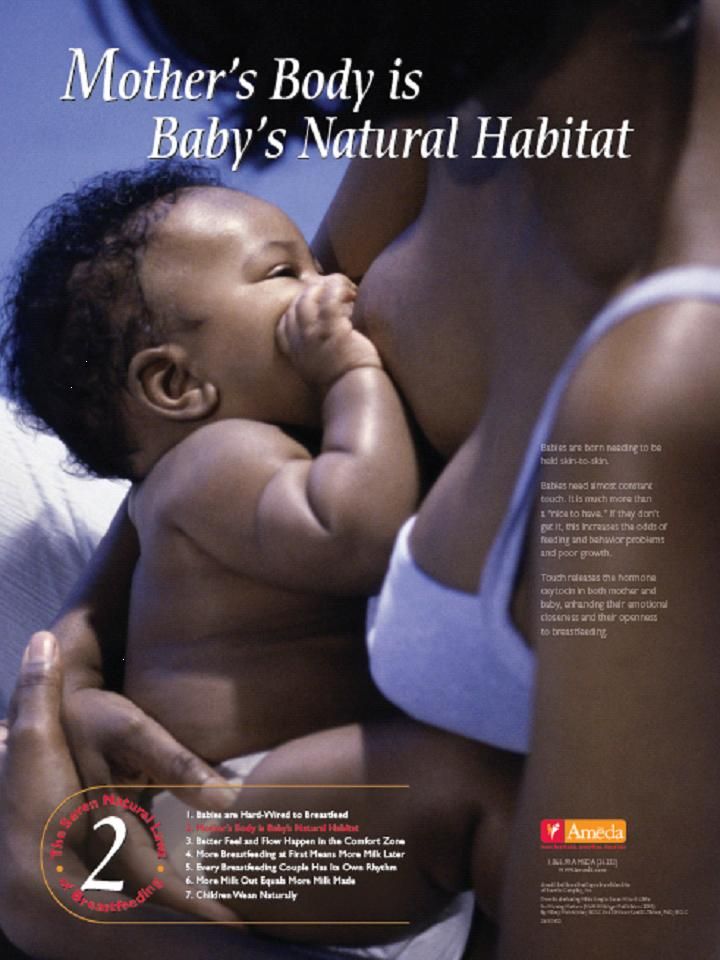 Feeding a baby at this stage is most likely to allow for a calm and successful feed.
Feeding a baby at this stage is most likely to allow for a calm and successful feed.
Licking lips
Making a smacking or sucking sound
Sticking Tongue Out
Sucking Things Nearby
Rooting (Turning head and opening mouth)
Hands to Mouth
Later Feeding Cues: Later feeding cues means the early cues were missed and now baby is quite hungry. Feeding may be more difficult.
Final Feeding Cues: Final feeding cues mean the baby is very hungry and is likely to struggle to coordinate themselves to feed effectively. Try to avoid letting it get that far.
Turning Red
Crying
Can I overfeed my bottle fed baby?
It is somewhat possible if you are using too fast of a nipple, but the same principals above also apply to bottle fed babies.
Using a slow flow nipple and a paced bottle feeding position (where the bottle is held more horizontal to the baby’s mouth) will help to mitigate the rush of milk inundating baby’s mouth. Dr. Brown’s Original with Preemie Nipple and Lansinoh Slow Flow Bottles are a good place to start.
Dr. Brown’s Original with Preemie Nipple and Lansinoh Slow Flow Bottles are a good place to start.
Avoid bottle nipples with abrupt changes from a narrow teat flaring to a wide base. Examples would be similar to Tommee Tippee, Comotomo, Mumijumi, and Nanobebe. These may work for some babies, but they pose a high risk of poor latches and feeding challenges for many. Also avoid flat or angled nipples.
Just like with breastfed babies, look for baby’s feeding cues to indicate when your baby is hungry.
Postpartum and breastfeeding
Successful breastfeeding secrets
- Early attachment.
It is very important to breastfeed immediately after birth. The baby is placed on the mother's stomach "skin to skin". Do not immediately try to breastfeed your baby. Let him lie down and rest. Soon the baby will be ready to attach to the breast and may even try to crawl to the breast. Then he will begin to sniff and lick her, and only then will he try to capture. It's good if mom and baby spend about an hour together. This stimulates the production of oxytocin, and hence the production of milk. Oxytocin helps the mother relax, promotes easy delivery of the placenta, and reduces postpartum bleeding. And the baby receives immunoglobulins, which are contained in colostrum. This protects it from infections and helps to form its own microflora as soon as possible. The baby is colonized by maternal bacteria, which are not dangerous for him. If you do not populate the skin and mucous membranes with mother's bacteria, then the bacteria of the hospital, which are alien to the child's body and can be dangerous for him, will settle in an empty place.
It's good if mom and baby spend about an hour together. This stimulates the production of oxytocin, and hence the production of milk. Oxytocin helps the mother relax, promotes easy delivery of the placenta, and reduces postpartum bleeding. And the baby receives immunoglobulins, which are contained in colostrum. This protects it from infections and helps to form its own microflora as soon as possible. The baby is colonized by maternal bacteria, which are not dangerous for him. If you do not populate the skin and mucous membranes with mother's bacteria, then the bacteria of the hospital, which are alien to the child's body and can be dangerous for him, will settle in an empty place.
- Joint stay of mother and child.
This is necessary for the successful organization of breastfeeding and subsequent feeding. Mom and baby adapt to each other, mom learns to recognize her baby's signals and meet his needs. When the baby is next to the mother and suckles the breast without restrictions, the production of hormones responsible for lactation increases in the mother's body. Ideally, the child should not be separated from the mother at all, and all necessary medical procedures can be carried out in her presence.
Ideally, the child should not be separated from the mother at all, and all necessary medical procedures can be carried out in her presence.
- Feeding on demand
In spite of the clock, look at the child. Let's breastfeed for every peep, every worry of the child. Most of the baby's needs disappear by themselves when the mother takes him in her arms and puts him to her breast. In mom’s arms, with breasts in her mouth, the child will warm up, be comforted, satiated, get drunk, let out gas, relieve pain ... React immediately to the child’s anxiety, don’t wait, but he will burst into tears for real. Don't be afraid to hurt your child. There can be no talk of pampering yet.
It is the vital need of a child to be in the mother's arms and suckle at the breast. Let him do it as much as he wants. Frequent feedings stimulate milk production, while feeding by the clock leads to a reduction in milk production. Feeding on demand implies the requirement of the mother too. If your breasts are full, or the baby sleeps too long and rarely sucks, mom offers the breast herself. Don't be afraid to overfeed your baby. It is impossible to overfeed with breast milk. Breast milk is digested within 15-20 minutes and the baby's stomach is ready for the next portion (whereas the mixture is digested in 4 hours ).
If your breasts are full, or the baby sleeps too long and rarely sucks, mom offers the breast herself. Don't be afraid to overfeed your baby. It is impossible to overfeed with breast milk. Breast milk is digested within 15-20 minutes and the baby's stomach is ready for the next portion (whereas the mixture is digested in 4 hours ).
- Exclusive breastfeeding.
This means that the baby should not be given anything other than the breast. With unlimited access to the breast, the child does not need water, glucose or tea. A small amount of colostrum in the early days can satisfy all the nutritional needs of the baby. Colostrum is very nutritious and contains a large amount of immunoglobulin, which protects the baby. Due to the low content of water in colostrum, it protects the baby's kidneys. Also, colostrum has a slight laxative effect and helps to cleanse the child’s body of meconium well and thereby reduces the risk of jaundice.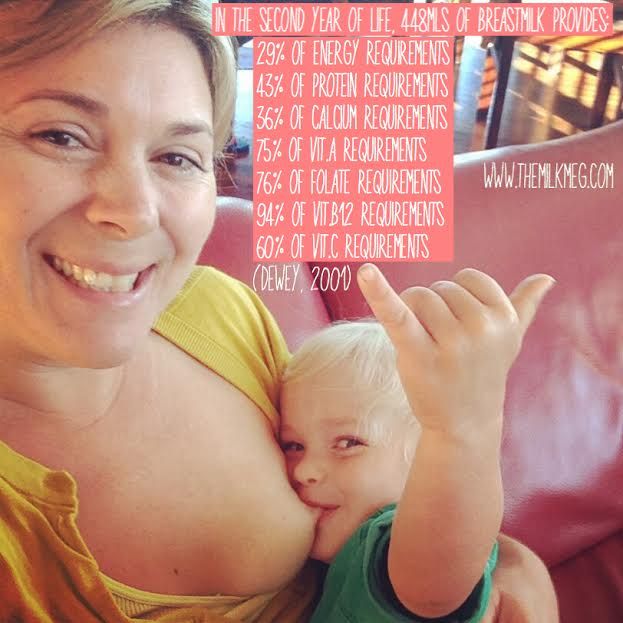 And later, up to 6 months the child does not need anything but milk.
And later, up to 6 months the child does not need anything but milk.
- Comfortable posture
Mom needs to get comfortable so that she can relax during feeding, because feedings can be long. If the mother is located in an uncomfortable position, then she will quickly get tired, and will receive not pleasure from feeding, but negative. It should also be comfortable for the baby. It is necessary to make sure that he lies comfortably, is closely pressed to his mother, so that he does not have to reach for the breast and make efforts to keep the nipple in the mouth.
- Correct grip
This is one of the most important aspects. Incorrect grip can lead to many troubles (pain during feeding, cracked nipples, lactostasis, lack of milk). Therefore, it is very important to initially attach the baby to the breast correctly and then make sure that the grip remains correct. Remember - if the grip is wrong, the mother should not experience pain. If there is pain, it should not be endured - you need to urgently correct the grip. And in this matter, the doctors of the Medical Center "Family Health" will always help you
If there is pain, it should not be endured - you need to urgently correct the grip. And in this matter, the doctors of the Medical Center "Family Health" will always help you
- Night feedings
Night feedings are essential, especially during the first months. At night, the highest production of prolactin occurs, which is responsible for the production of milk. Therefore, in order to have enough milk, you need to apply at night or at least in the morning hours (from 3-00 to 6-00).
- Breast change.
There are different opinions about breast changes. You can feed for two hours with one breast, or you can change breasts several times in one feeding. The child should suckle the first breast for at least 20-30 minutes, after which he can be offered the second. The main thing is not to press the second breast until the child has emptied the first one properly. Both methods provide that the child receives not only the “front” milk, rich in water, lactose, minerals and proteins, but also the “back” milk, rich in fats, vitamins, enzymes, growth factors, satiety and sleep.
- Pumping.
Milk is produced on demand. No need to express leftovers after feeding. This is a waste of time and may lead to hyperlactation. Pumping is necessary in the following cases:
* the mother has problems with breasts (cracked nipples, lactostasis, mastitis)
* excess milk or hyperlactation (in this case, pumping should be stopped gradually)
* temporary weaning when the mother needs to undergo treatment not compatible with HW
* temporary separation of mother and child
* mother goes to work
* a supply of milk is needed.
- Breast Care
Breasts should not be washed before every feeding. It is enough to take a shared shower once a day. Do not use soap to wash your breasts. It washes away natural lubrication from the nipples, dries the skin and contributes to the appearance of cracks. Give your chest air baths more often. If your milk leaks between feeds, put disposable or reusable special absorbent pads or clean rags folded several times in your bra. Pads need to be changed often enough to keep your breasts dry.
Pads need to be changed often enough to keep your breasts dry.
- How to tell if your baby is getting enough milk.
There are only two reliable ways to tell if a baby is getting enough milk. This is the so-called "wet diaper test" and control of weight gain. The essence of the 1st method is to calculate how many times a day your child pees. If a child pees at least 10 times for girls and 12 times for boys, then you have enough milk. In the first two weeks, the number of pee should not be less than the number of days lived from birth.
Weight gain is determined once a week, and control weighings (before and after feeding) are not indicative . Fullness and, moreover, breast size is also not an indicator of the amount of milk. By about 1.5 months, lactation is established and the breasts may be soft, not full, and even appear empty. This means that there is as much milk as your baby needs. When more milk is needed, the baby will regulate its amount.
- Child weight
In the first days after birth, the baby loses weight. If weight loss is not more than 7%, there is nothing to worry about. The increase is calculated from the minimum weight. In the first month, the child has the right not to add or add not much. Up to 6 months, the minimum weight gain is 500 grams. per month or 125 gr. in Week. After 6 months, the child begins to move more, respectively, the increase decreases. Minimum - 300 gr. per month. The upper limit of the increase can be up to 2 kg.
- Bottles and pacifiers
Even a full bottle can harm breastfeeding. A dummy is generally an extra item. If necessary, give supplementary food for medical reasons or medicine, a bottle, can be easily replaced with a cup, spoon or syringe without a needle.
One of the dangers of the bottle is that it is easier to extract the liquid from it, it practically flows into the mouth by itself. After that, the baby does not want to work and get milk from the breast, when it can be easily obtained from a bottle. This provokes breast rejection. The second danger of the bottle is that breast sucking and bottle sucking are completely different.
This provokes breast rejection. The second danger of the bottle is that breast sucking and bottle sucking are completely different.
- Child's chair for GV
In the first days the baby's stools are black and thick. It's meconium coming out. Then the color and consistency of the stool changes. Usually the child's stool on GV is mushy, mustard-colored. Also, the stool can be with greens, mucus, grains, foam. This should not be scary, you do not need to run to the doctors, take tests and treat a non-existent disease. Thus, intestinal dysbiosis manifests itself. At birth, the child's gastrointestinal tract is sterile. Then it is populated by microflora. This usually happens by about 6 months, after which it is already possible to introduce complementary foods to the child. In a child on HB in the first month and a half, bowel movement occurs almost after each feeding, then the stool decreases. In some children, the stool is reduced to 1 time in several days (up to 10 days) and this is not constipation. Just breast milk is very well absorbed. If the baby receives only breast milk, THE CHILD DOESN'T WORRY, THE CHAIR IS SOFT - DO NOT WORRY.
Just breast milk is very well absorbed. If the baby receives only breast milk, THE CHILD DOESN'T WORRY, THE CHAIR IS SOFT - DO NOT WORRY.
IF YOU HAVE ANY QUESTIONS OR PROBLEMS REGARDING BREASTFEEDING, YOU CAN ALWAYS CONTACT THE FAMILY HEALTH MEDICAL CENTER FOR CONSULTATION. THE DOCTORS OF OUR CENTER WILL ALWAYS GIVE YOU THE NEEDED HELP AND GIVE YOU A CONSULTATION.
Is it possible to overfeed a breastfed baby?
The birth of a baby is perhaps one of the happiest events in a woman's life. And every mother wants to give her baby all the best. And of course, she tries her best to fulfill almost all the tips and recommendations for caring for and especially feeding the crumbs. However, it is important to understand which of them are really useful and which can be harmful.
For example, young mothers often come across such recommendations as: “Feed your baby according to the regimen, no more than once every three hours, do not overfeed!”, “Replace part of the feedings with water!”, “Look, your baby gained too much or too little! ". Where did such fears come from, are they justified, is it even possible to overfeed a child on breastfeeding? Let's try to figure it out.
Where did such fears come from, are they justified, is it even possible to overfeed a child on breastfeeding? Let's try to figure it out.
Often these recommendations are based on developmental norms for formula-fed or mixed-fed babies. However, on natural feeding, the baby himself regulates the frequency and duration of feedings.
In recent years, the World Health Organization has developed norms according to which healthy children who are exclusively breastfed can gain from 500g to 2000g per month in the first months of life. Thus, an increase of both 500g and 2 kg is absolutely normal. In addition, breastfeeding is a factor that reduces the risk of obesity and other endocrinological diseases in adulthood.
Why are we so often told about possible overfeeding? Again, this seems to have come from bottle feeding.
The baby sucking on the bottle cannot regulate the flow rate of the bottle. After all, it is enough to press on the bottle nipple or even just lower it with the hole down so that the liquid flows. A small child is simply not physically able to control the flow rate when bottle fed. And besides, given the high flow rate, he does not have time to understand that he is full, and, as a rule, eats more than he needs.
A small child is simply not physically able to control the flow rate when bottle fed. And besides, given the high flow rate, he does not have time to understand that he is full, and, as a rule, eats more than he needs.
When breastfeeding, the baby can vary the rate of suckling and thereby regulate the rate of milk flow. With longer measured feeding from the breast, nerve impulses from the walls of the stomach have time to reach the areas of the brain responsible for the feeling of hunger and satiety, the child feels in a timely manner that he has eaten, and either stops sucking or changes the rate of sucking, for example, in order to fall asleep.
Unlike formula feeding, breastfeeding does not require any nursing intervals. After all, mother's milk is the most natural food for a baby, it does not overload the child's gastrointestinal tract, it contains enzymes and probiotic bacteria that promote digestion and assimilation of itself.
But babies spit up not from overeating.